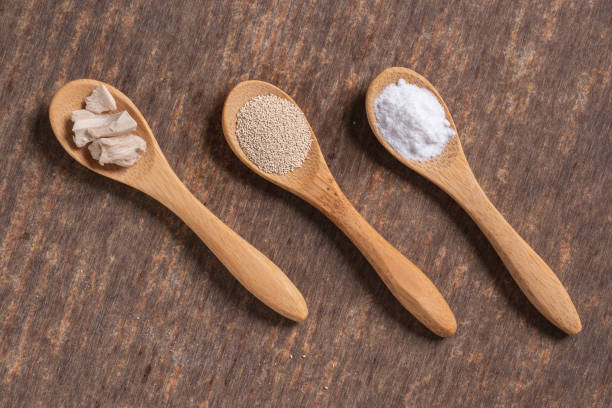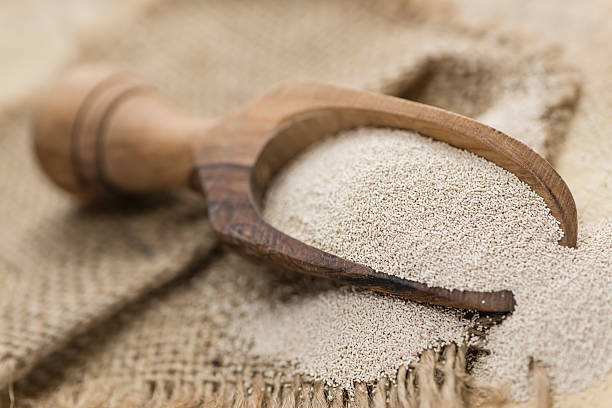Many recipes simply state that you need to add a packet of yeast to the dough without specifying how much. Do you know how much yeast is in a packet if you bake?
Otherwise, you’re in for a treat. You can learn everything there is to know about yeast, including how much is contained in each packet, in this blog post. The need to wonder will thus never arise again.
How Much Yeast is in a Packet?
Both instant and active dry yeast are frequently found in the grocery store’s baking section and are typically packaged in packets. They frequently arrive in a package that contains 3 separate packets.
1/4 ounce (7 grams) or 2 1/4 teaspoons of yeast are contained in each individual yeast packet. The equivalent of 3/4 tablespoon is also one packet of yeast.
Yeast comes in larger quantities that are packaged in jars or bags if you are a frequent baker.
What is Yeast?
Yeast is a living organism that originates from the Saccharomyces cerevisiae fungi family of living things. Yeast is used to making bread, brioche, yeasted blini, beer, etc.
The name “yeast” comes from the fact that these organisms cause bread dough to rise: they make it swell.
However, don’t mistake baker’s yeast for the leavening agent baking powder.
The latter is a “chemical yeast” made from baking soda, potassium hydrogen tartrate, and cornstarch. Cakes can be made using baking powder.
Types of Yeast
Active Dry Yeast
This kind of yeast is used in a wide variety of recipes frequently. Making active dry yeast requires manufacturers to drain the water from live yeast. 2 1/4 teaspoons of yeast are contained in one packet of active dry yeast.
Instant Yeast
Dry instant yeast comes in finer granules than active dry yeast. When baking, it can usually be combined with dry ingredients and dissolves more quickly.
RapidRise Yeast
The company Fleischmann’s produces RapidRise yeast. It can be found in the baking aisle and is offered in packets of three.
Because it is a fast-rising yeast and it works for recipes that call for one quick rise, RapidRise differs from instant yeast.
Fresh Yeast
The term “cake yeast” also applies to fresh yeast. Instead of tiny granules, it comes in blocks.
The refrigerator should always be used to store fresh yeast because it doesn’t keep as well.
Professional bakers prefer cake yeast or fresh yeast because it has a stronger flavor.

How Yeast Works
Following the addition of the yeast to the dough, the sugars there are consumed by the yeast cells, who then transform them into ethanol and carbon dioxide (CO2). Alcoholic fermentation is the name of this process.
The internal inflation of the bread caused by carbon dioxide takes up space. It forms bubbles (the “holes” in the crumb of the bread).
Don’t forget gluten either, which creates an elastic net in the bread dough. Thus, kneading the dough enables the development of gluten.
Since the bread is a closed medium, CO2 released from the yeast cannot escape during baking. As a result, it is drawn to the bread’s surface by its surface.
The gluten net is under pressure, and the dough expands as a result. The bread dough will rise better if there is more yeast and sugar added.
How to Store Yeast?
Unopened yeast packets should be kept in a cool, dry, and dark location. Be sure to keep it out of direct sunlight where it might get hot. An 18-month shelf life is typical for yeast packets.
Once a packet of yeast has been opened, keep it in the refrigerator in an airtight bag or container. This ensures that it maintains its effectiveness. Yeast will keep for roughly 4 months after being opened.
Yeast can also be frozen to extend its shelf life. It can be kept fresh in the freezer for up to two years.
Are you unsure if your yeast is still viable? Check the packet or jar’s expiration date first. Pour 1/4 cup of water, 1 teaspoon of sugar, and 1 packet of yeast into a bowl to test it. After 10 minutes, if it begins to foam, it is ready for use.
Final Thoughts
When making bread, yeast is essential. The quantity of yeast in every type of packet is the same: 2 ¼ teaspoons. Don’t omit the yeast from the recipe and pay close attention to the directions. A flat, dense, crumbly loaf of bread will result if you don’t. Yuck!
Did you know that a packet of yeast contained how much? Which type of yeast do you use most frequently? Share with us below!
FAQ
Can You Use Expired Yeast?
For the rising dough, the depleted, expired yeast is ineffective. Even though it appeared to work in the experiment, strong yeast is required for a good dough rise.
How Long Does Yeast Packet Last?
Always look at the yeast’s packet to confirm the expiration date. If properly stored, active dry and instant yeast has a two-year shelf life. Before using it, make sure to run the yeast activity test.
How Many Teaspoons Are in a Packet of Yeast?
Each packet (which some recipes also refer to as an envelope) contains 2 ¼ teaspoons of yeast. The quantity inside is unaffected by the type of yeast. The number of teaspoons of yeast in active dry yeast, instant rise yeast, and all other varieties is the same.

